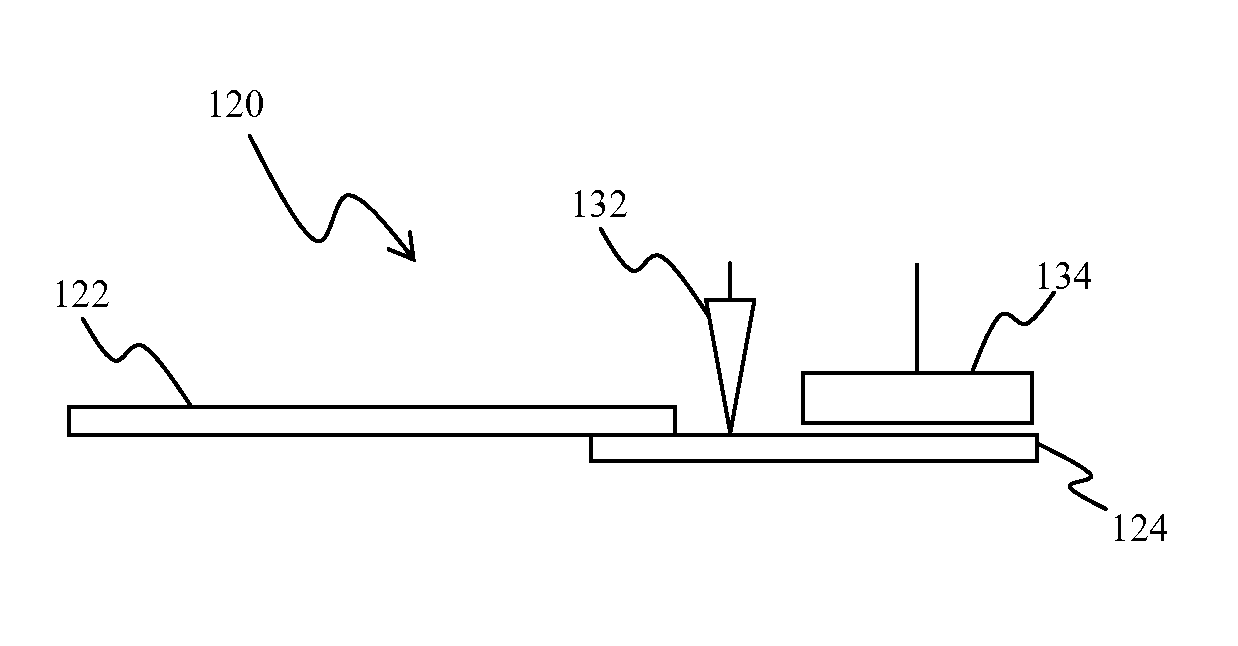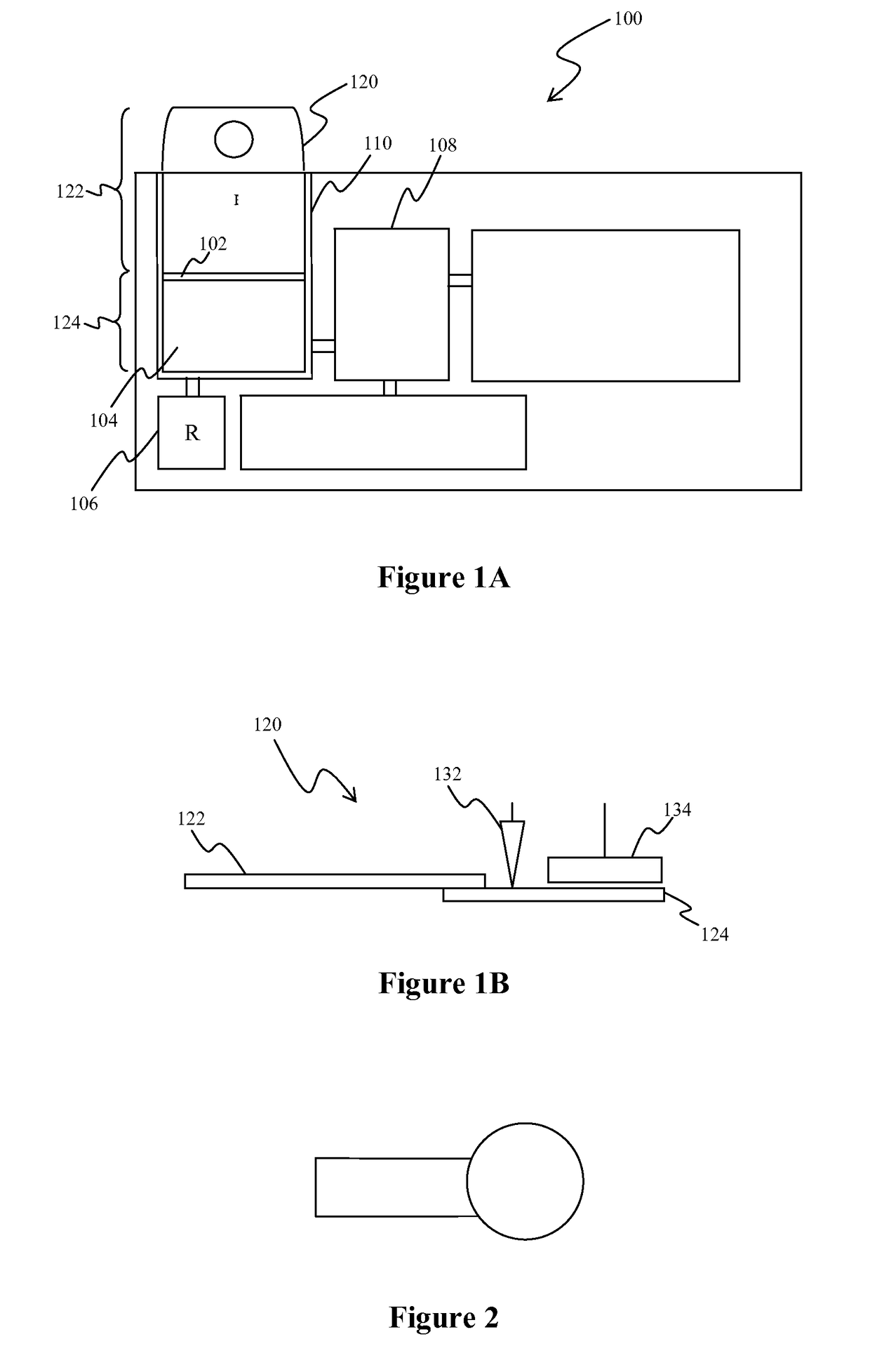Whole blood analytic device and method therefor
a technology of analytic devices and whole blood, which is applied in the direction of membrane technology, membranes, instruments, etc., can solve the problems of multiple steps, high cost of centrifuges, and difficult centrifugation
- Summary
- Abstract
- Description
- Claims
- Application Information
AI Technical Summary
Benefits of technology
Problems solved by technology
Method used
Image
Examples
experiment set 1
[0042]In a first series of experiments, the sample volumes on the sample pads were determined by weighing the pads before and after sample introduction. The sample pads used were Ahlstrom CYTOSEP 1660 specialty paper and were cut to a specific size of 14 mm by 7 mm and shape as shown in FIG. 2. After sizing the sample pads, plasma was added to a blood separation device to determine the approximate capacity of the sample pad when cut to the above dimensions.
[0043]Table 1 depicts the measurements found when plasma was added to sample pad.
[0044]
TABLE 1Weight 1Weight 2Weight 3Average(mg)(mg)(mg)(mg)Blank Sample Pad12.012.112.0Saturated Sample Pad28.233.430.330.6
[0045]Based on the figures in the table above, the net weight of the sample was 18.6 mg. The precision of the gravimetric measurements for the samples were thus calculated as having a mean of 18.6 mg, standard deviation of 2.62 mg, and a coefficient of variation of 14.1%.
experiment set 2
[0046]In a second series of experiments, a volume was transferred from the sample pad to a TSH immunoassay to determine extraction volume efficiency. This determination was performed by using: (1) sample volumes of 10 μL, 20 μL, and 30 μL directly pipetted into FastPack TSH assay pouches wherein the assay was conducted; and (2) pads containing sample that were sealed into the sample chambers of multiple FastPack TSH pouches wherein the assay was conducted. Six replicates using three different analyzers were used. Moreover, 20 μL of samples were pipetted onto each of 9 sample pads and sealed into the sample chambers of individual FastPack pouches. Based on the above, a TSH standard curve was developed using the sample volumes of 17.5 μL and 20 μL. The extracted volumes were then calculated based upon the chemiluminescent signal generated (RLUs or Relative Light Units). Thus, the average volume of sample extracted was determined to be 17.6 μL and the extracted volume efficiency based ...
PUM
| Property | Measurement | Unit |
|---|---|---|
| width | aaaaa | aaaaa |
| width | aaaaa | aaaaa |
| saturation volume | aaaaa | aaaaa |
Abstract
Description
Claims
Application Information
 Login to View More
Login to View More - R&D
- Intellectual Property
- Life Sciences
- Materials
- Tech Scout
- Unparalleled Data Quality
- Higher Quality Content
- 60% Fewer Hallucinations
Browse by: Latest US Patents, China's latest patents, Technical Efficacy Thesaurus, Application Domain, Technology Topic, Popular Technical Reports.
© 2025 PatSnap. All rights reserved.Legal|Privacy policy|Modern Slavery Act Transparency Statement|Sitemap|About US| Contact US: help@patsnap.com


